Trees Birds Mammals Fish Amphibians Reptiles
Wild Algarve
Bookshop
Cuphophyllus colemannianus (A. Bloxam) Bon - Toasted Waxcap
Phylum: Basidiomycota - Class: Agaricomycetes - Order: Agaricales - Family: Hygrophoraceae
Distribution - Taxonomic History - Etymology - Identification - Culinary Notes - Reference Sources
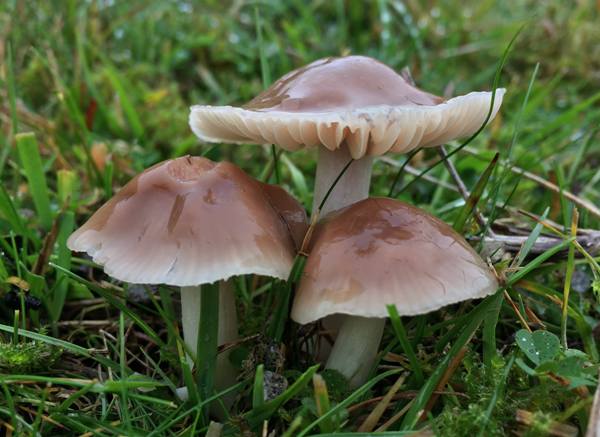
The Toasted Waxcap Cuphophyllus colemannianus is recognisable by its brownish decurrent gills and (usually) red-brown cap; however, pale specimens also occur and they can be difficult to identify conclusively without resorting to microscopic study.
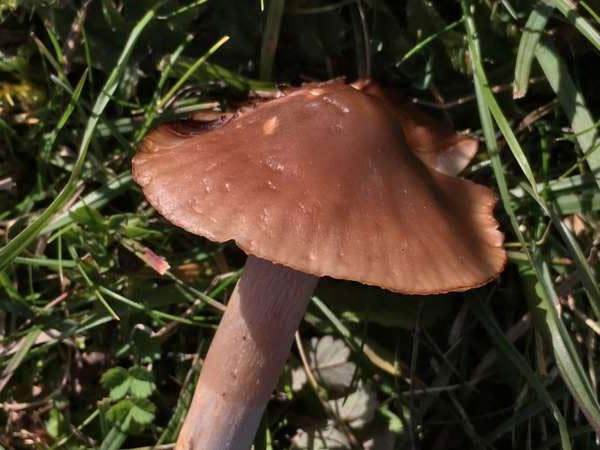
Distribution
Cuphophyllus colemannianus is a rare and rather localised waxcap species in Britain and Ireland. This waxcap is also recorded across most of Europe, but its occurrence is rare or very rare.
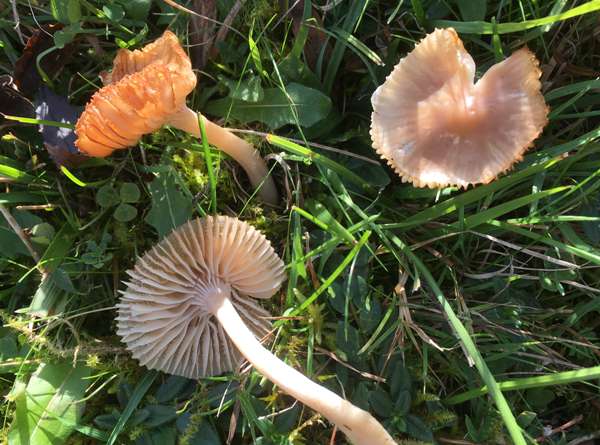
Above: pale specimens of Cuphophyllus colemannianus.
Taxonomic history
The basionym of this species dates from an 1854 publication by English naturalist and mycologist the Reverand Andrew Bloxam (1801 - 1878), who gave it the scientific name Hygrophorus colemannianus. The currently-accepted scientific name Cuphophyllus colemannianus was established via a 1985 publication by the French mycologist Marcel Bon (1925 - 2014).
Synonyms of Cuphophyllus colemannianus include Hygrophorus colemannianus A. Bloxam, Camarophyllus colemannianus (A. Bloxam) Ricken, and Hygrocybe colemanniana (A. Bloxam) P.D. Orton & Watling.
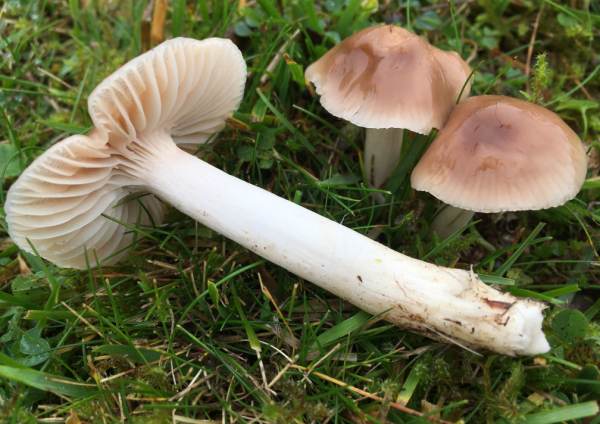
Etymology
The genus Cuphophyllus was described in 1985 by French mycologist Marcel Bon. The prefix Cupho- means curved, while the suffix -phyllus refers to the leaves (gills) of mushrooms in this genus - so we arrive at 'with curved gills'. (Its former genus Hygrocybe is so named because fungi in this group are always very moist. Hygrocybe means 'watery head'.)
The specific epithet colemannianus honours Bloxham's friend and fellow English naturalist the Reverand William Higgins Coleman (1812 - 1863).
Identification guide
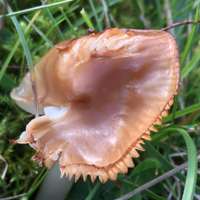 |
Cap
Hemispherical to campanulate when young, then flattening, often with a low broad umbo and sometimes slightly infundibuliform (shallowly funnelled) with upturned margins when mature, caps range from 0.7 to 5cm across; greasy or slightly slimy in wet weather; striate towards the margin; reddish brown to orange brown or pinkish with a pale cream margin that contrasts with the brown striations; hygrophanous, paler in dry weather. |
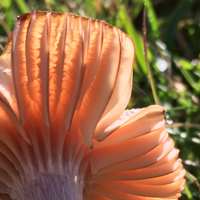 |
Gills
Decurrent, interveined, the brown-tinged buff gills are widely spaced.
Basidia mostly four spored. |
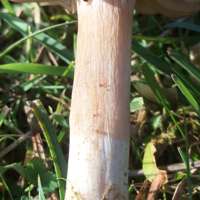 |
Stem
Creamy white or very pale brown at the apex, white towards the base; cylindrical, 3 - 7mm diameter and 2 - 5cm long, but usually tapering slightly at the base; no stem ring. |
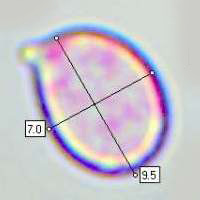 |
Spores
Ovoid to broadly ellipsoidal, smooth; 7.5-9 x 5-6μm; hyaline; inamyloid.
Spore print
White. |
Odour/taste |
Not distinctive. |
Habitat & Ecological role |
In unimproved grassland such as old lawns and churchyards. Waxcaps have long been considered to be saprobic on the dead roots of grasses and other grassland plants, but it is now considered likely that there is some kind of mutual relationship between waxcaps and mosses. |
Season |
September to November in Britain and Ireland. |
Similar species |
Gliophorus irrigatus is brownish but much more slimy. |
Culinary Notes
Cuphophyllus colemannianus is not a culinary collectible.
Reference Sources
Fascinated by Fungi, 2nd Edition, Pat O'Reilly 2016, reprinted by Coch-y-bonddu Books in 2022.
Fungi of Northern Europe, Volume 1 - The Genus Hygrocybe, David Boertmann, 2010.
Dictionary of the Fungi; Paul M. Kirk, Paul F. Cannon, David W. Minter and J. A. Stalpers; CABI, 2008
Taxonomic history and synonym information on these pages is drawn from many sources but in particular from the British Mycological Society's GB Checklist of Fungi.
Acknowledgements
This page includes pictures kindly contributed by Simon Harding.
Top of page...
Fascinated by Fungi. Back by popular demand, Pat O'Reilly's best-selling 450-page hardback book is available now. The latest second edition was republished with a sparkling new cover design in September 2022 by Coch-y-Bonddu Books. Full details and copies are available from the publisher's online bookshop...